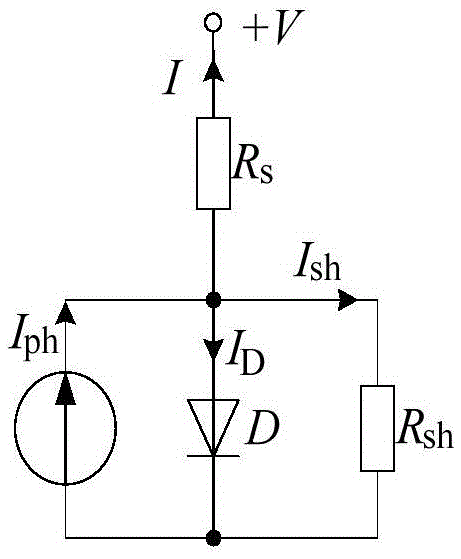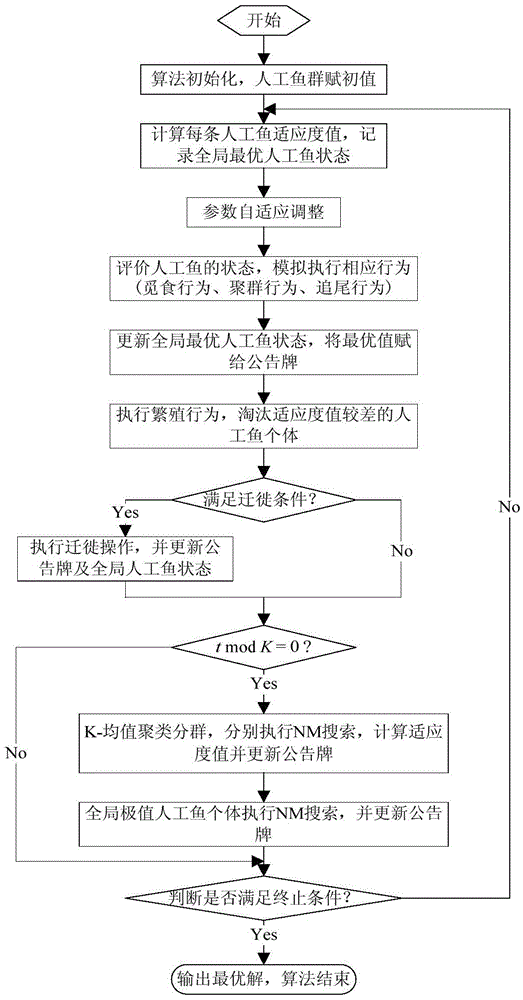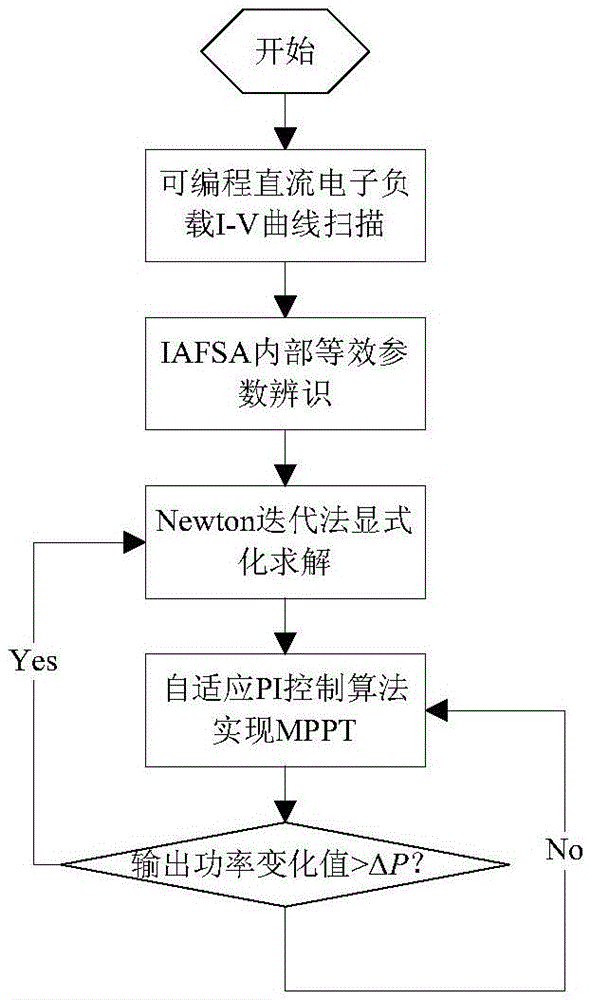MPPT (Maximum Power Point Tracking) algorithm for photovoltaic module based on parameter identification
A photovoltaic module and parameter identification technology, applied in computing, electrical digital data processing, special data processing applications, etc., can solve problems such as slow dynamic response and poor steady-state accuracy, and achieve the effect of increasing speed and high accuracy
- Summary
- Abstract
- Description
- Claims
- Application Information
AI Technical Summary
Problems solved by technology
Method used
Image
Examples
Embodiment Construction
[0046] Attached below figure 1 , 2 , 3, the present invention is described in detail:
[0047] Based on the programmable DC electronic load, the data of the photovoltaic module is measured. Taking the TSM-250PC05A photovoltaic module as an example, for the convenience of solving, N=32 can be selected. Under actual operating conditions, the current light intensity S and ambient temperature T are measured by the solar pyranometer TBQ-2 and the temperature sensor PT100, respectively.
[0048] Usually, the equivalent circuit model of a photovoltaic cell is as figure 1 As shown, the model parameters mainly include: photogenerated current (I ph ), diode reverse saturation current (I SD ), diode ideal quality factor (n) and equivalent series-parallel resistance (R s , R sh ).
[0049] In practical applications, a photovoltaic module consists of N s = 60 photovoltaic cells connected in series, then the equivalent circuit equation of Kirchhoff’s current law (KCL) of photovoltai...
PUM
 Login to View More
Login to View More Abstract
Description
Claims
Application Information
 Login to View More
Login to View More - R&D
- Intellectual Property
- Life Sciences
- Materials
- Tech Scout
- Unparalleled Data Quality
- Higher Quality Content
- 60% Fewer Hallucinations
Browse by: Latest US Patents, China's latest patents, Technical Efficacy Thesaurus, Application Domain, Technology Topic, Popular Technical Reports.
© 2025 PatSnap. All rights reserved.Legal|Privacy policy|Modern Slavery Act Transparency Statement|Sitemap|About US| Contact US: help@patsnap.com



